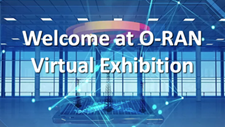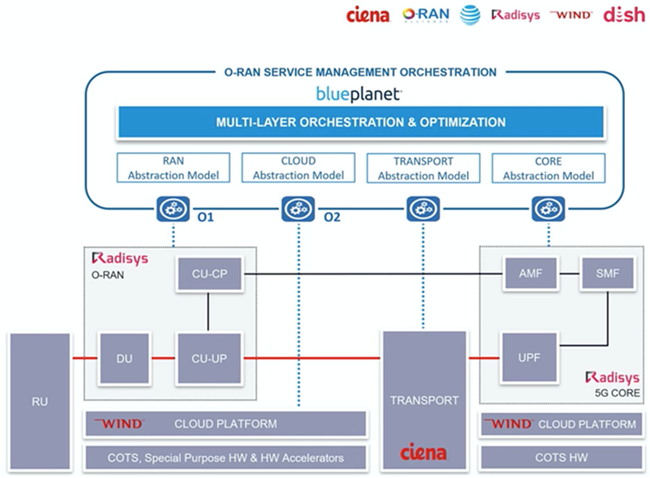Driving towards an open and smarter RAN
The time to open the RAN is now
Since the dawn of mobile networking, the Radio Access Network (RAN) has been closed and proprietary. It remains one of the last parts of the global network infrastructure yet to be opened. Doing so will allow Mobile Network Operators (MNOs) to pick-and-choose radios, Baseband Units (BBU) components, and the transport networks that interconnect them, from one or more vendors.
Opening the RAN, via a broad adoption of open specifications, will yield benefits related to new market entrants with new ideas and mindsets, faster innovation fueled by increased competition, a broader and more secure supply chain, as well as expected price reductions driven by increased competition. The benefits of openness are simply too enticing to ignore and is why the movement continues to gain momentum.
With great openness comes great responsibility
An open RAN also comes with tradeoffs to be addressed, because great openness comes with great responsibility. Building best-in-breed RANs composed of different vendors means someone has to do the integration of the radios, BBU components, and transport network that interconnects them, since this was previously done by the sole turnkey vendor.
Interworking issues tend to be more involved, especially as the number of vendors grows, but there’s work being done by such groups as the O-RAN Alliance, Small Cell Forum, 3GPP, and Telecom Infra Project (TIP) to alleviate the challenges associated with an open RAN. The number of groups working on opening the RAN is a good indication of the will of the industry, especially the MNOs, to eliminate decades old vendor lock-in. This is because the time to open the RAN is now, as 5G systems are just starting to be rolled out with increasing velocity, worldwide.
Towards a more open and smarter RAN
The O-RAN Alliance is operator-driven and is striving towards “future RANs will be built on a foundation of virtualized network elements, white-box hardware and standardized interfaces that fully embrace O-RAN’s core principles of intelligence and openness”, and given that operators are the ones with the most to gain, it makes sense that they’re driving this alliance. Their open specification work is well-organized and is divided into several technical workgroups, which are under the supervision of a Technical Steering Committee and provides for a formal specification process.
To demonstrate the feasibility, industry support, and benefits of an open RAN, the O-RAN Alliance provided a virtual exhibition to provide “virtual demonstrations of real O-RAN-based technology transforming the Radio Access Network industry towards open, intelligent, virtualized and fully interoperable RAN”, accessible here. Ciena is a proactive believer in open networks in general, and an open RAN in particular, as evidenced by the recent open enhancements to our 5G Network Solutions portfolio of products.
We announced a family of new routers designed for open 4G/5G xHaul (fronthaul, midhaul, backhaul) networks, as well as Network Slicing and Dynamic Planning enhancements to our Blue Planet Automation Software portfolio, and a suite of associated professional services.
 To continue the industry drive towards an open RAN, Ciena recently led development of an industry demo co-sponsored by Radisys, Wind, AT&T, and Dish entitled “O-RAN 5G Edge Orchestration & Optimization Demonstration”. It demonstrates multi-layer optimization of 5G RAN, transport, and core resources with a hierarchical control plane that enables new opportunities for “5G Edge Systems as a Service” with dynamic combinations of resources from different service providers resulting in a healthy ecosystem for infrastructure and services resource sharing.
To continue the industry drive towards an open RAN, Ciena recently led development of an industry demo co-sponsored by Radisys, Wind, AT&T, and Dish entitled “O-RAN 5G Edge Orchestration & Optimization Demonstration”. It demonstrates multi-layer optimization of 5G RAN, transport, and core resources with a hierarchical control plane that enables new opportunities for “5G Edge Systems as a Service” with dynamic combinations of resources from different service providers resulting in a healthy ecosystem for infrastructure and services resource sharing.

O-RAN 5G Edge Orchestration & Optimization Demonstration Configuration
As Kaniz Mahdi from the Ciena CTO Office states, “this demo shows how telecommunications service providers and a healthy vendor ecosystem can successfully achieve common strategic objectives – establishing how an open RAN is not only possible, but is also the direction the industry should, and will take, given the many associated benefits to both service providers and their chosen vendors”, which is a sentiment felt across the networking industry.
The benefits of an open RAN are simply too critical for telecommunications service providers to ignore and given the number of industry initiatives actively striving towards similar goals, there’s no doubt that the RAN will become increasingly open and intelligent. Ciena, alongside network service providers and other equipment vendor partners, continue to collaborate towards these achievable goals with steady progress being made by all. This means that the days of vendor lock-in the RAN are indeed numbered, and rightfully so.
Ciena’s Lyndon Ong, Co-Chair O-RAN WG6 Cloudification and Orchestration, continues “as an active member of the O-RAN Alliance, Ciena is following the network operators' lead to define the architecture and interfaces for a truly open, multi-vendor RAN with the added flexibility of virtualized, cloud-based RAN functions.”
The question of an open RAN is not if but when, and given current industry momentum, it’ll be sooner than later.













